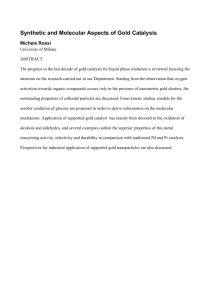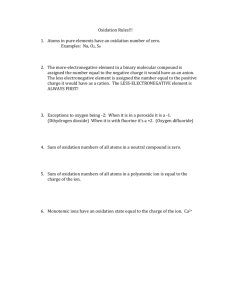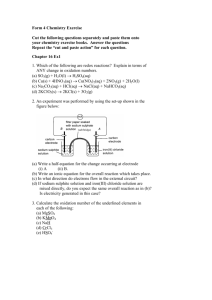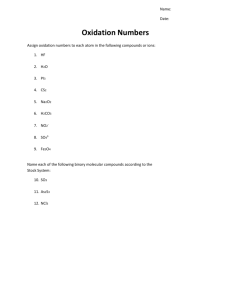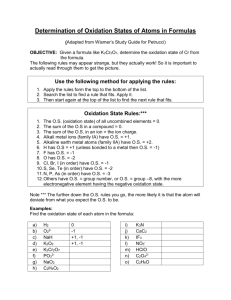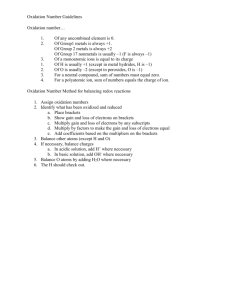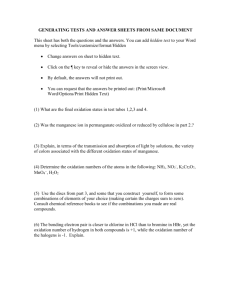CHEM- oxidation states
advertisement
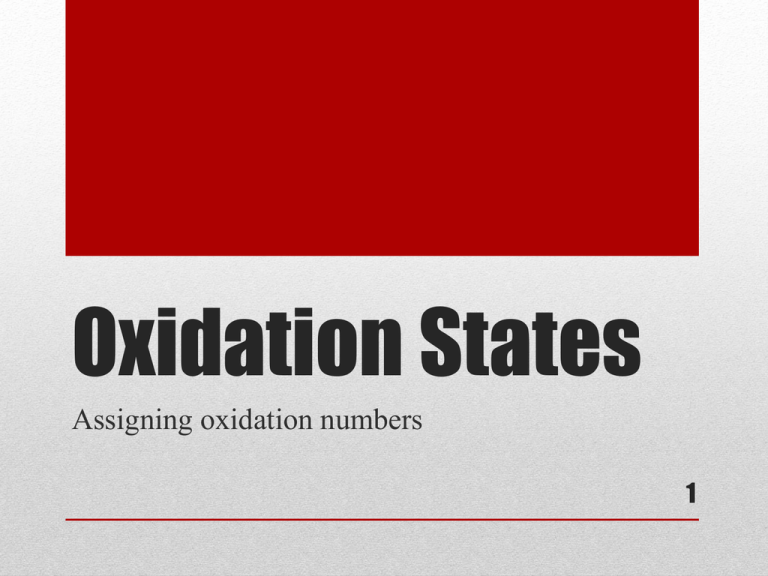
Oxidation States Assigning oxidation numbers 1 Assigning Oxidation Numbers • An “oxidation number” is a positive or negative number assigned to an atom to indicate its degree of oxidation or reduction. • Generally, a bonded atom’s oxidation number is the charge it would have if the electrons in the bond were assigned to the atom of the more electronegative element Rules for Assigning Oxidation Numbers 1. The oxidation number of any uncombined element is zero. • Examples: all atoms in sodium Na, oxygen O2, phosphorus P4, and sulfur S8. Rules for Assigning Oxidation Numbers 2. The oxidation number of a monatomic ion equals its charge. 0 0 1 1 2 Na Cl 2 2 Na Cl 4 Rules for Assigning Oxidation Numbers 3. The oxidation number of fluorine is ALWAYS -1 4. oxygen usually has and oxidation number of -2 Exceptions: • In peroxides, such as H2O2 oxygen has an oxidation number of -1. • In compounds with fluorine, such as OF2, oxygen’s oxidation number is +2. Rules for Assigning Oxidation Numbers 5. Hydrogen has and oxidation number of +1. Exceptions: In metal hydrides, like NaH, hydrogens oxidation number is -1. 1 2 H2O 6 Rules for Assigning Oxidation Numbers 6. The sum of the oxidation numbers of the atoms in a neutral compound must equal 0. 1 2 H2O 2(+1) + (-2) = 0 H O 2 2 1 Ca (O H ) 2 (+2) + 2(-2) + 2(+1) = 0 Ca O H Rules for Assigning Oxidation Numbers 7. The sum of the oxidation numbers in the formula of a polyatomic ion is equal to its ionic charge. ? 2 N O3 X + 3(-2) = -1 N O thus X = +5 ? 2 S O4 2 X + 4(-2) = -2 S O thus X = +6
